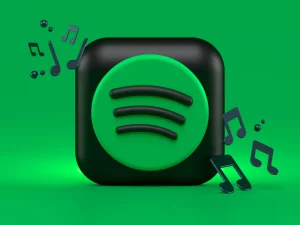The ‘Spotify Model’ is a product delivery model made famous by Spotify. It focuses on team structure (in the form of squads, chapters, guilds and tribes) and delivery mechanisms such as fail fast, release trains and documentation. The model was made famous by Henrik Kniberg. Below is a series of articles on the subject of the Spotify Model.

Analysing the Spotify Model: Unpacking the Pros and Cons of the Tribe Structure
Introduction Spotify has garnered widespread recognition for its innovative organizational approach known as the Spotify Model. At the heart of this model lies the concept

Unlocking the Spotify Model: Why your Guild is Failing
Many organisations have tried to adopt the ‘Spotify Model’ over the past few years. This is a framework made popular by Henrik Kniberg who at

Agile Team Organisation: Squads, Chapters, Tribes and Guilds
Agile Team Organisation: Squads, Chapters, Tribes and Guilds There is a growing trend around agile company organisation reorganisation with Agile and Scrum. A structure made
Spotify Model FAQ
Who created the Spotify Model?
Spotify created the model, which was made famous by Henrik Kniberg.
Where can I find the original Video?
You can find the original video part one here and part two here
What is the Spotify Model?
The Spotify model is a people-driven, autonomous approach for scaling agile product delivery, that emphasises the importance of culture and network building. It initially helped Spotify increase innovation, productivity and efficiency by focusing on autonomy, communication, accountability, and quality. The Spotify model isn’t a framework per say, as Henrik Kniberg explains its more Spotify’s view on scaling. It shows an approach or model to managing and aligning multiple teams in product development organisations, especially when working on complex products.
When was the Spotify Model Introduced
The Spotify model was first introduced in 2012, when Henrik Kniberg and Anders Ivarsson published the whitepaper Scaling Agile @ Spotify, which introduced the Spotify model and how the company approached agility. The Spotify model since then, and even to this day has generated a lot of buzz and became popular in the agile transformation space.
The main appeal of the model solves a lot of the problems digital and product organisations face, such as focusing on organising around work rather than following a specific set of practices. In traditional scaling frameworks, specific practices (e.g. daily stand ups) are how the framework is executed, whereas the Spotify model focuses on how businesses can structure an organisation to enable agility. The Spotify model champions team autonomy, so that each team selects their framework. Squads are organised into Tribes and Guilds to help keep people aligned and cross-pollinate knowledge.
What are the elements of the Spotify Model structure?
The main elements of team structure in the Spotify model are: squads, chapters, tribes and guilds.
What is a Squad?
Squads are cross-functional, autonomous teams (typically 6-12 individuals) that focus on one product or feature area. Each Squad usually has a unique mission that guides the work they do. A squad could be compromised of a Product Manager, Developers, UX, Design, QA – pretty much any role needed to help the team own their area and reduce dependencies. The team is also empowered to pick its own frameworks and way of working.
What is a Chapter?
Even though Squads are autonomous, and focus on their goal at hand. It’s also important that specialists align on best practices, their skills and receive coaching and mentorship. Chapters are the peers that each specialist has, helping to keep standards in place across a discipline. Chapters are typically led by a senior lead, who may also be the manager for the team members in that Chapter.
What is a Tribe?
Tribes are needed when delivery teams start to scale. When multiple Squads coordinate within each other on the same product or feature area, they form a Tribe. Tribes are there to build alignment across Squads and ensure there is still alignment and focus at scale. Tribes can typically consist of 40 – 150 people, and have a Tribe Lead who is responsible for helping coordinate across Squads and for encouraging collaboration.
What is a Guild?
Team members who are passionate about a topic can form a Guild, which essentially is a community of interest. Anyone can join a Guild and they are completely voluntary.There is no formal leader of a Guild usually. A guild needs to have clear objectives or a mission to be successful.
What is an Alliance?
As organisations scale and get bigger, you get to a point where Tribes need to closely work together to accomplish a goal. Alliances are a combination of Tribes (typically three or more) that work together to help their Tribes collaborate on a goal that is bigger than any one Tribe.
What is a Trio?
The Trio (aka TPD Trio) consists of a Tribe Lead, product lead, and design lead. Each Tribe has a Trio in place to ensure there is continuous alignment between these three perspectives when working on features areas.
What are the benefits of the Spotify Model?
The Spotify model outlines many benefits for organisations.
- Less formal process and ceremony – The Spotify model focuses on organising around work and not necessarily global, standardised, rigid processes and ceremonies. This gives greater flexibility when it comes to how Squads chose to work. Instead of requiring Squads to change how they do their work, it focuses on aligning them with each other and driving towards individual team outcomes.
- Self-management and autonomy – The Spotify model pushes for autonomy by trusting teams to complete the work they are doing in the way they best see fit. The model focuses on decentralising decision making and transferring that responsibility to squad members.
- Increased transparency – The Spotify model can offer more transparency into the work being done. It aims to grow a more experimentation-based approach to solving problems with a focus on trust and autonomy.
What are the challenges with the Spotify Model?
Spotify created the model to set a specific set of problems that organisation wants to solve, its based on one companies way of operating. Many organisations want the same benefits of the Spotify model, so they attempt to just copy the model. Some organisations experienced more success than others, but it’s likely no organisation experienced the same success as Spotify. An organisation’s current culture and structure need to be taken into account, and the gaps from the Spotify Model. One thing that the videos from Henrik don’t show, is all the work and pain and experimentation that probably occurred to reach that point. The model is simple, but the environment it’s implemented in is complex.
To some, it may seem like a simple matrix organizational structure where people report to a functional area (Chapter), but work with a cross-functional team (Squad). However, it’s more complex than that. The key cultural elements of the model need to be in place to allow the structure to be a success. If you do not have trust and autonomy in place, and if an organisation doesn’t shift its ways, there will never be the same impact. If you simply rename teams to Squads, you’re just putting lipstick on a pig.
Also, the Spotify Model is just not cut out for every company. The model looks fantastic from the outside, but choosing to implement it simply because it worked for Spotify is a mistake. The model fits the company culture, which is much more difficult to change than the framework you’re following. Rearranging the structure of your company is a big risk and a huge investment.
What are the best practices when implementing the Spotify Model?
- Don’t Just copy the model – Take the time to research and understand the structure, practices, and mindset behind Spotify’s approach. The journey and the identification of what problems they are solving is the key. Once there you can tweak the aspects of the model or take out, be inspired by the components of it to fit your own organsiation. The goal should not to be like Spotify, but to leverage their learnings, experiments and implementation to improve how your organisation works together.
- Autonomy & Trust – The model only works when you give as much autonomy as possible to the teams, which allows them to make decisions quickly.
- Transparency -One of the key factors to success is building community and transparency around work. Establish things like Guilds to encourage participation from everyone in the organisation. Build trust by creating transparent ways to gather feedback and gain alignment
- Fail fast and make mistakes – You will fall down and stumble in this journey, that’s a given. Improvement involves experimenting and learning from both successes and failures. Encourage the same within your organisation, learn from failing and be comfortable with experimentation.
Does Spotify Still use the Spotify Model?
It has been stated by Spotify that they no longer use the model made popular in the video, and they have evolved past that now.
Should I Implement the Spotify Model?
That’s what you might be asking yourself, if it worked for them can it work for us.
When choosing any new framework, research and gap analysis is key. The first thing to figure out is what problems you’re currently facing as an organisation. Then try to match those problems against the solutions raised in the Spotify Model. Some will seem like good solutions, some might seem way off.
You’ll never solve your problems if you don’t get to the root of them. Gather feedback from every single team member on the problems they face that are caused by company culture/structure, and work to come up with a list of the most common ones.
The Spotify model isn’t a case of all-or-nothing. You don’t need to strip down your org chart and rebuild it according to the model.
